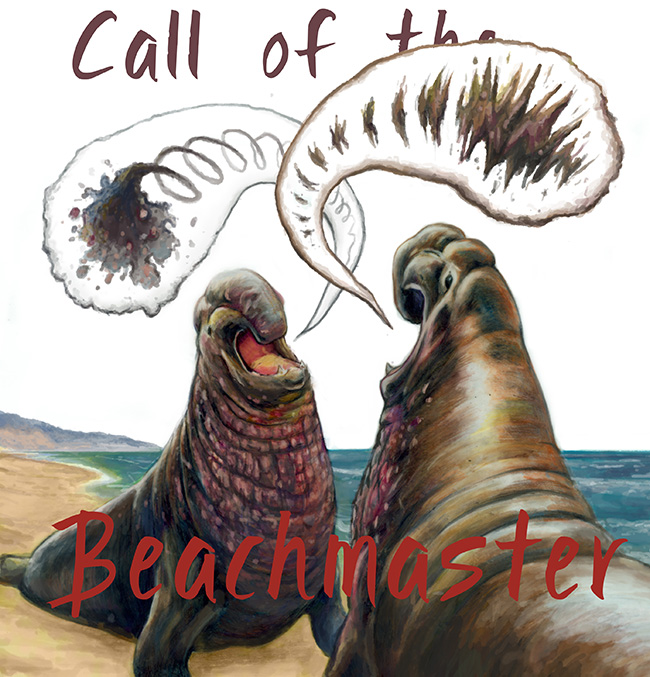Two researchers studying elephant seals at Ano Nuevo won awards at the International Biologging Science meeting Last week. Congratulations to Taiki Adachi for winning best talk and Sarah Peterson for winning best poster!
Read the conference abstracts below to learn about their work:
Searching prey in 3D environment: hierarchical foraging behaviour of northern
elephant seals
Adachi Taiki 1, Costa Daniel 2, Robinson Patrick 2, Yamamichi Masato 3, Naito Yasuhiko 4,
Takahashi Akinori 1,4
1: Department of Polar Science, the Graduate University for Advanced Studies, Japan (im.taiky@gmail.com)
2: Department of Ecology and Evolutionary Biology, University of California Santa Cruz, USA
3: Department of Ecology and Evolutionary Biology, Cornell University, USA
4: National Institute of Polar Research, Japan
Predators are expected to adjust their movement path according to the spatial distribution pattern of
prey. In the marine environment, diving predators exploit three-dimensional (3D) environment where
small-scale prey patches are often nested within large-scale patches (hierarchical distribution). However, few studies examined the fine-scale foraging behaviour of deep divers in three dimensions. Here we applied spherical first-passage time (SFPT) analysis on 3D diving path of four female northern elephant seals during their foraging migrations. We also examined prey encounter events along the 3D diving path using mandible accelerometers. SFPT analysis showed that area-restricted search (ARS) behaviour occurred at the small spatial scale of 8-10 m (i.e. radius of sphere), which was nested within the larger ARS scale of 17-19 m. Small- and large-scale ARS behaviour occurred 4.7 and 5.9 times in a single dive on average, respectively, and covered only the small proportion (9 and 22%, respectively) of the total distance traveled during the bottom phase of dives. However, a large proportion of prey encounter events (71 and 84%) occurred during the small- and large-scale ARS behaviour, respectively. These results suggest that elephant seals effectively use nested ARS behaviour to enhance foraging success in the hierarchically structured 3D marine environment.
Elephant seals: biologgers of contaminants in the mesopelagic North Pacific
Peterson Sarah 1, Ackerman Josh 2, Covaci Adrian 3, Debier Cathy 4, Costa Daniel 1
1: University of California Santa Cruz, USA (saepeter@ucsc.edu)
2: United States Geological Survey, USA
3: University of Antwerp, Belgium
4: Université Catholique de Louvain, Belgium
Northern elephant seals (Mirounga angustirostris), mesopelagic (200-1000 m) marine predators that
forage in the coastal and open-ocean North Pacific, integrate contaminants into their tissues while
foraging. We used satellite-tracked adult females (with time-depth recorders) as biologgers of mercury and persistent organic pollutants (POPs) to examine links between foraging ecology and contaminant accumulation, as well as to determine how contaminant distribution may vary geographically. At the end of a foraging trip, we sampled 78 seals for total mercury (blood and muscle) and a subset of these (N=23) for POPs (blood and blubber). Total mercury in blood and muscle fell among the highest concentrations reported for marine predators. Moreover, foraging ecology influenced mercury exposure, with the highest concentrations observed in offshore, deep-diving females. We observed differences in mercury and POP concentrations across the foraging range of elephant seals, suggesting varying geographic distributions and bioaccumulation of specific compounds. Our results indicate that mesopelagic predators may be at greater risk for contaminant accumulation than previously assumed and provide insight into the potential for contaminants in elusive and vulnerable mesopelagic species. We also demonstrate how quantifying animal behavior using biologging technology can be used in conjunction with animals as biological integrators of their environment.









